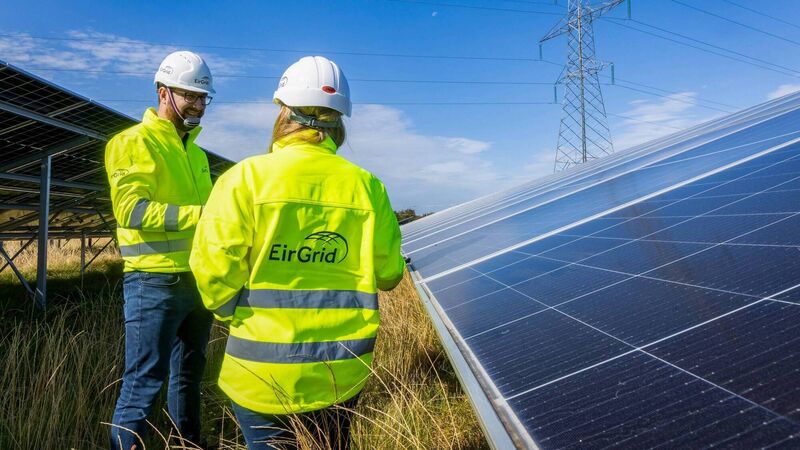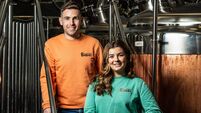EirGrid, transforming the power system for future generations

EirGrid is working to deliver the most ambitious programme of work ever taken on the transmission system in Ireland.
EirGrid, operator and developer of the electricity grid, is leading Ireland's transition to a more secure energy system.
With communities and businesses relying on connection more than ever, we are facing the most important decade of development for the country, to ensure critical electricity infrastructure development meets this demand.
However, as well as providing a reliable power system, we must harness more solar and wind energy to reach government targets for 80% of our energy to come from renewable sources.
“Renewable energy is the key to unlocking greater energy independence and security, as well as economic growth and the development of a stronger society," Siobhán O’Shea, EirGrid's Chief Infrastructure Officer Onshore (interim) said.
"However, in the face of rising electricity demand, grid reinforcement is also necessary to ensure that our electricity system continues to deliver a reliable energy supply."

EirGrid is already making progress towards this goal, with progress being made to deliver the most ambitious programme of work ever taken on the transmission system in Ireland.
This journey involves a host of inputs, one of which, critically, is planning permission, and two critical projects of a host consented this year were the Kildare-Meath Grid Upgrade and the East Meath-North Dublin Grid Upgrade.
“The Programme for Government has put great focus on prioritising the delivery of critical infrastructure projects and EirGrid is committed to supporting their delivery. These planning decisions signify another step in the journey of realising these projects,” noted O’Shea.
Committed to progressing critical infrastructure, EirGrid is looking ahead to 2026, with projects such as the North Connacht 110 kV Project expected to start construction next year.
The project will see a new circuit added to the electricity grid in Co Mayo and Co Roscommon. “This new line will strengthen the grid in Connacht. It will provide electricity capacity to meet increasing electricity demand, supporting economic growth in the area,” explained O’Shea.
Among the projects taking place right across the country to enhance and build out the grid is the Celtic Interconnector, a subsea link between Ireland and France, which will exchange enough electricity to power 450,000 homes.
A flagship project for EirGrid, along with our French equivalent, Réseau de Transport d'Électricité (RTÉ), the project will be an important contributor to shoring up Ireland's security of electricity supply by providing a direct link to continental Europe.

Significant progress has been made to date on the Celtic Interconnector, both in Ireland and in France, including construction of the converter stations and significant progress of land cabling works in both countries.
Marking a key milestone in the project last month, the project team in Ireland welcomed the successful delivery of all four transformers for the project, which will play a critical role in this key energy project, which is set to be completed in spring 2028.
"Colleagues across EirGrid have made significant progress with this project, with the positive engagement with communities in the project area allowing for these milestones to be reached," O'Shea added.
In addition to grid infrastructure on land, EirGrid is also making progress in its role in enabling Ireland’s vast offshore renewable resources, leading plans to connect electricity from offshore renewable energy resources off the south coast to the national electricity grid.
The Government’s Climate Action Plan sets out that Ireland needs 9GWs of onshore wind capacity, with at least 5GWs of offshore capacity, along with Solar PV capacity of 8GWs.
"While EirGrid is not responsible for generating electricity or building wind or solar farms, we are responsible for connecting electricity generation infrastructure, such as offshore and onshore windfarms, into our national electricity grid.”
O’Shea added: “Ireland has world-leading potential in the renewable energy space, but significant investment and development of the electricity grid is required if we are to achieve our ambitions.
“In an expanding economy, and with a large increase planned in electricity usage, renewable energy targets will be challenging to meet, but EirGrid is working towards them and making great progress.”
EirGrid also recognises that the move towards a cleaner energy future requires communities to host grid infrastructure and is committed to collaborating with local stakeholders throughout every step of the transition to a cleaner energy system.
“This inclusive approach to grid development encourages a shared sense of ownership over our electricity grid and a responsibility for the future of it,” O’Shea said.
“We at EirGrid look forward to continuing our work with communities and stakeholders to develop a power system fit for today’s needs and transforming the power system for future generations.” To learn more about how EirGrid is powering up Ireland, visit








